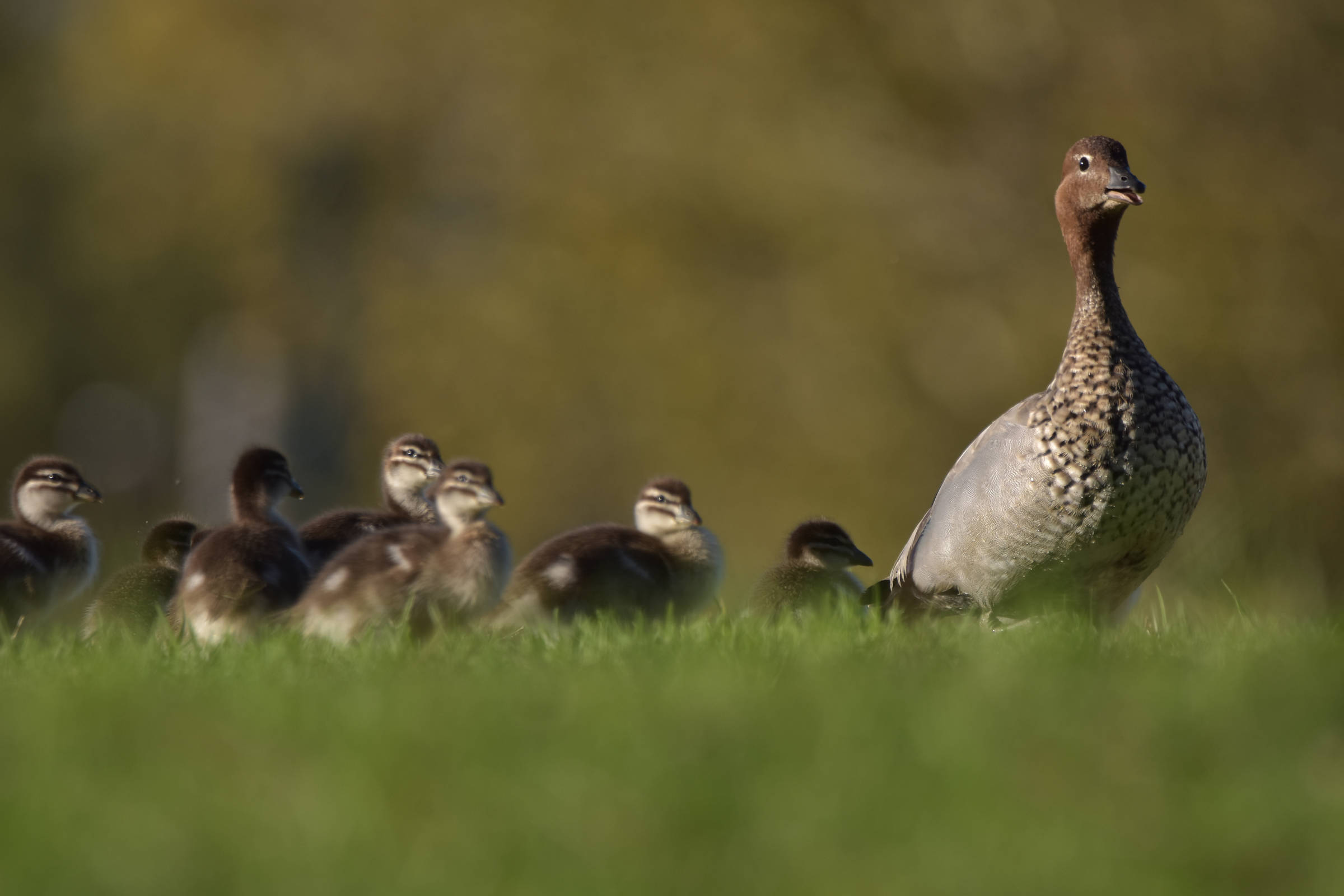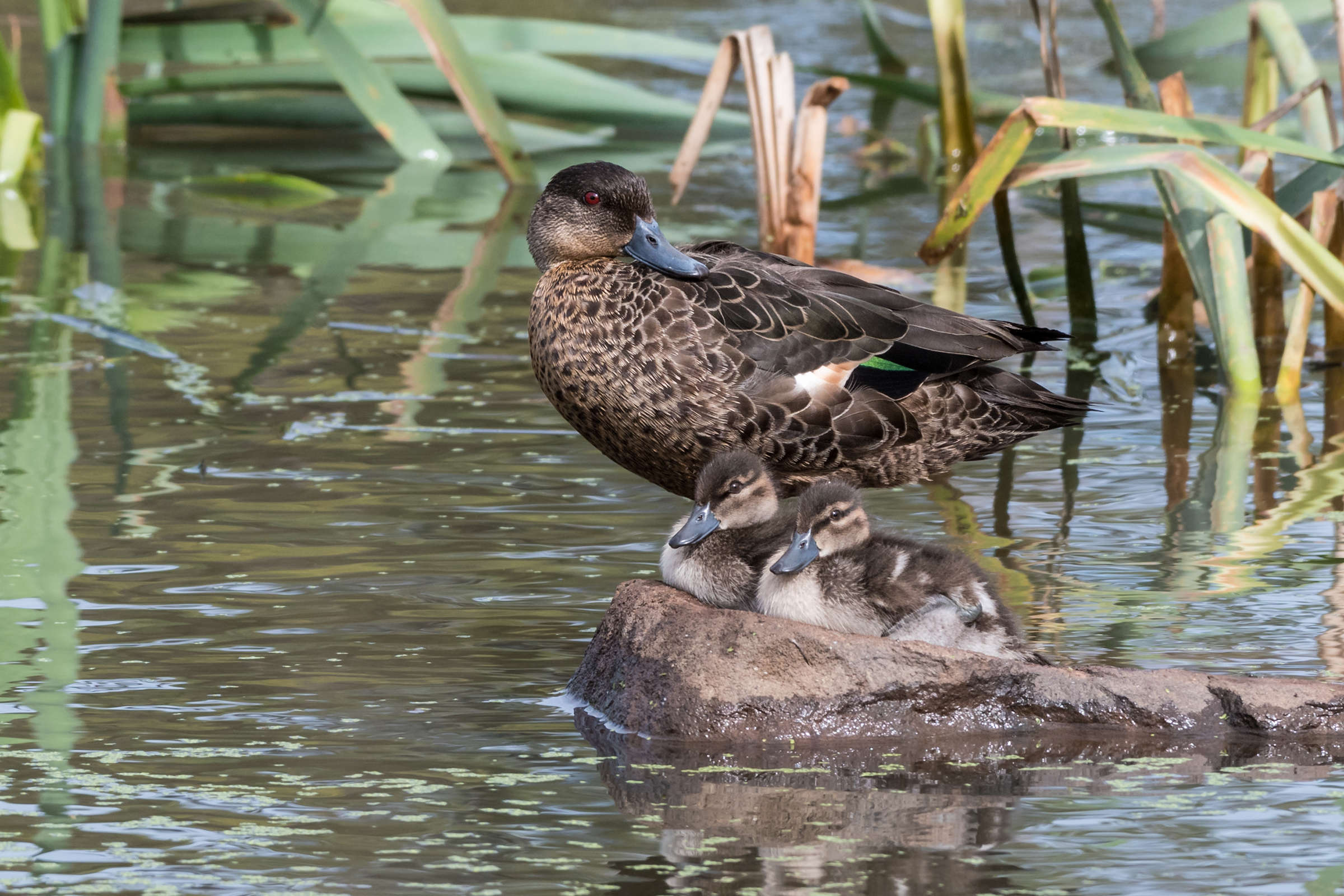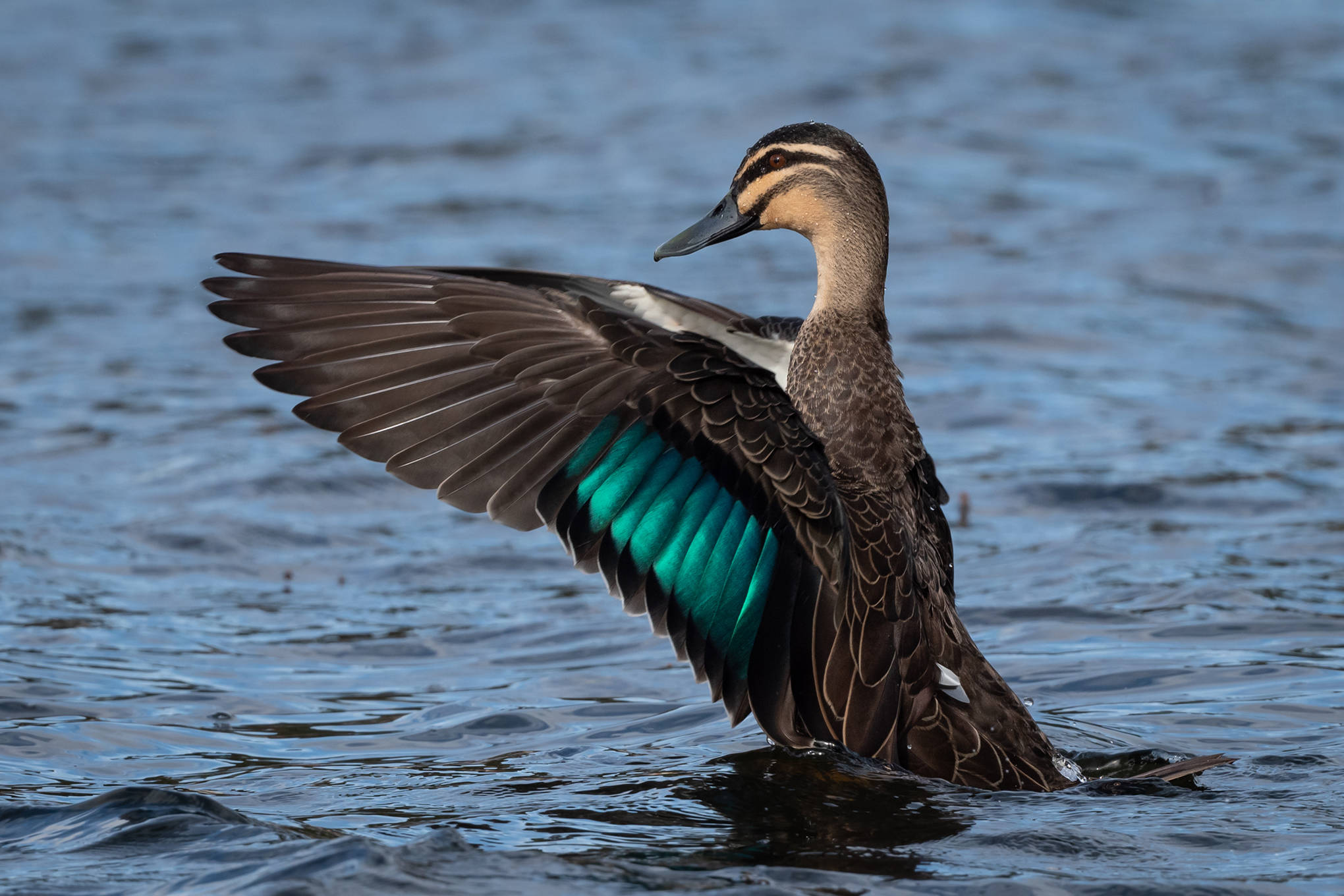
Australian Wood Duck family
Image: Luke Holmes
How to help our ducks:
- Do not feed ducks any food or water.
- Get to know the different duck species, and their unique antics, for example at Goulds Lagoon.
- Keep dogs on-lead and away from ducks.
- Learn all about ducks, the challenges they face, and get involved where you can – see our further information box.
Problems with feeding ducks
- Human foods can cause illnesses and deformities, and can never match the nutrients ducks get through their natural diet of aquatic vegetation, insects, worms and small aquatic animals.
- Ducks need to learn to forage as part of their survival skills, and can become desensitised to humans and threats if we feed them, making them vulnerable to cars and dogs.
- Feeding leads to more ducks and more duck poo, which can cause water pollution and algal blooms.
Problems with introduced ducks
- Feeding encourages the introduced Mallard duck (Anas platyrhynchos), which is bigger and more aggressive, and can squeeze out the often smaller and more timid native species.
- Areas with large flocks of these domestic ducks can have excess duck poo, and they can also trample vegetation which is important habitat for other species.
- Mallards are closely related to the native Pacific Black Duck (Anas superciliosa) and the two species can cross-breed to create fertile hybrids. The Pacific Black Duck is at risk of extinction in Tasmania, by being replaced with these hybrids.
- The majority of Mallards in the wild are dumped domestic ducks, which is illegal and cruel. For the sake of the Pacific Black Duck’s survival in Tasmania, it’s critical that we are not supporting the ongoing dumping of domestic Mallards by feeding them.
The Derwent Estuary Program is working with local councils, duck experts, and government agencies on how to better manage the problems associated with large groups of introduced ducks.

Chestnut Teal with ducklings.
Image: Helen Cunningham

Pacific Black Duck.
Image: Helen Cunningham
Further information
- Ducks of Tasmania – booklet with illustrations and information about all the Tasmanian ducks
- Pacific Black Duck Conservation Group
- Hobart Magazine – How hybrid ducks are threatening the future of native ducks
- Living with ducks – Dept. of Natural Resources and Environment Tasmania
- Wildlife Centre of Virginia – consequences of feeding ducks
- iNaturalist – Help by recording location of Mallards and hybrids
- Glenorchy City Council – Individual duck species information
